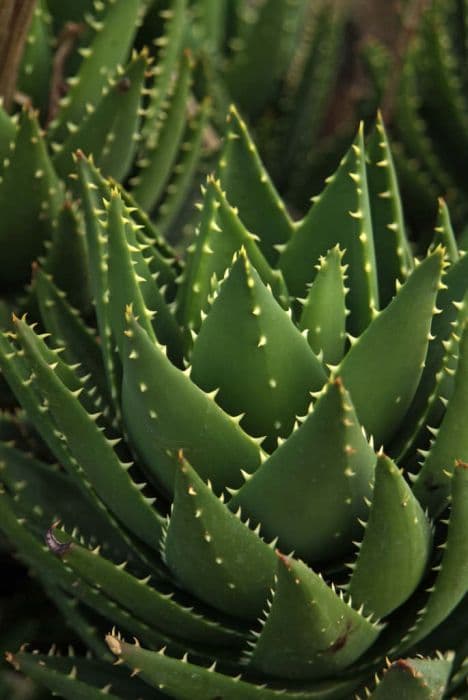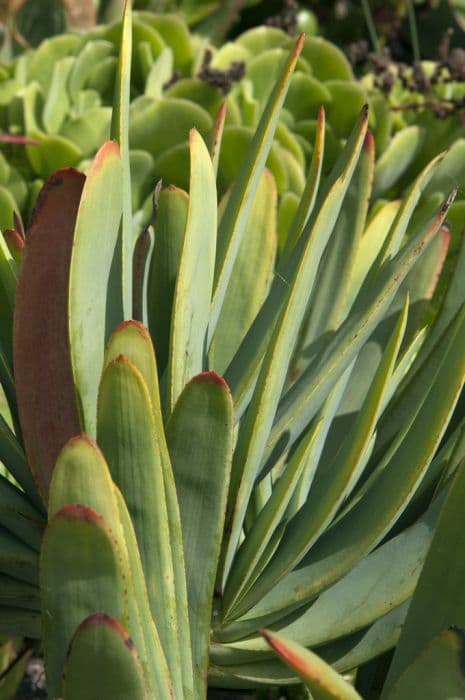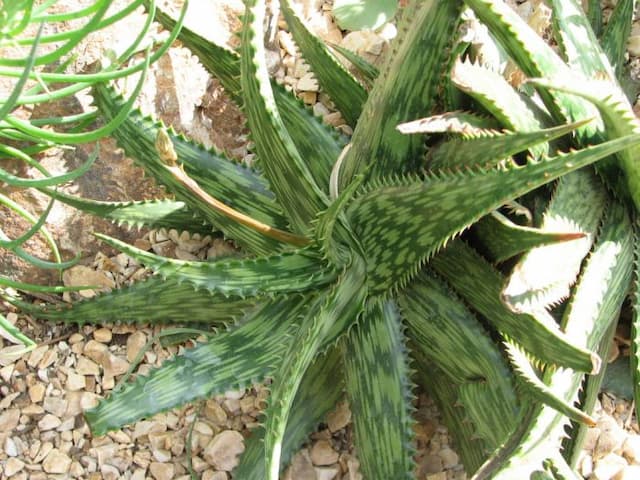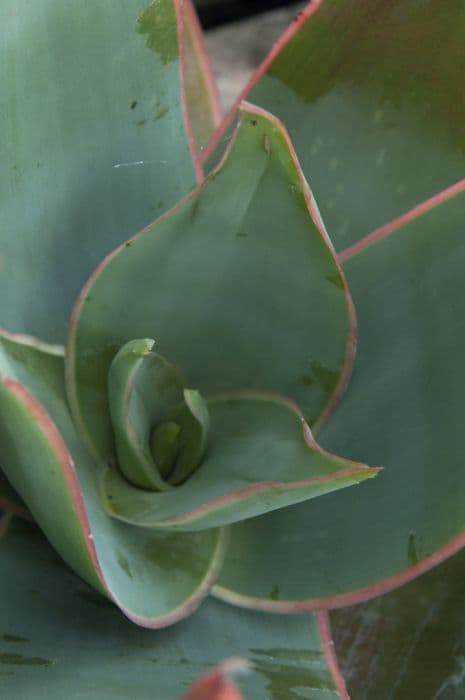Foxtail Lily Eremurus robustus

ABOUT
Eremurus robustus, commonly known as the foxtail lily, is a striking perennial plant that adds a dramatic touch to any garden setting. It is characterized by its long, dense spires of flowers that resemble a fox's tail, hence the name. The flower spike of the foxtail lily is adorned with numerous star-shaped blooms that are arranged in a columnar fashion along the central stalk. These flowers come in a range of colors, often displaying various shades of pink, yellow, and orange, which contribute to the plant's eye-catching display. The foliage of the foxtail lily consists of long, strap-like leaves that form a basal rosette at the base of the plant. These leaves are typically bright green, adding a lush underpinning to the more prominent flowering spike. As the plant matures, the leaves may begin to wither away, usually after the flowering period and as the plant goes into dormancy. Overall, the foxtail lily presents a vertical accent in the garden with its towering flower spikes and creates a sense of elegance and height. It is commonly used in borders, beds, and as a feature plant for its impressive inflorescence, which serves as a magnet for pollinators such as bees and butterflies. The foxtail lily's appearance, with its regal stature and vibrant blossoms, makes it a favorite among garden enthusiasts looking to add vertical interest and bold color to their outdoor spaces.
About this plant
 Names
NamesFamily
Asphodelaceae.
Synonyms
Foxtail Lily, Desert Candle, King's Spear.
Common names
Henningia robusta
 Toxicity
ToxicityTo humans
The plant known as the Foxtail lily (Eremurus robustus) is not widely recognized for its toxicity to humans. There is limited information on the plant causing notable harm when ingested. However, as with many plants, individual sensitivities can vary, and ingestion might cause mild stomach upset in some individuals. It's always a good idea to err on the side of caution and avoid eating plants that are not typically recognized as food sources. If ingestion does occur and adverse symptoms are noticed, medical attention should be sought.
To pets
The Foxtail lily (Eremurus robustus) is not commonly noted for being toxic to pets. There is limited information suggesting that it is hazardous to animals. However, pets may have individual sensitivities, and ingestion could potentially cause mild gastrointestinal discomfort, such as vomiting or diarrhea. It is generally advised to keep an eye on your pet if they ingest plant material and to consult a veterinarian if any abnormal signs are observed. Preventing pets from ingesting plants that are not part of their usual diet is a good practice to avoid potential issues.
 Characteristics
CharacteristicsLife cycle
Perennials
Foliage type
Deciduous
Color of leaves
Green
Flower color
Pink
Height
8 feet (2.4 meters)
Spread
2 feet (0.6 meters)
Plant type
Bulb
Hardiness zones
5
Native area
Central Asia
Benefits
 General Benefits
General Benefits- Ornamental Value: Eremurus robustus, commonly known as the foxtail lily, provides striking vertical accents in garden landscapes with its tall, dramatic flowering spikes.
- Attracts Pollinators: Due to its vibrant and large floral display, it is known to attract various pollinators such as bees and butterflies, enhancing biodiversity.
- Low Maintenance: Once established, the foxtail lily is relatively low maintenance and drought-tolerant, making it suitable for gardens with less frequent watering.
- Architectural Interest: The plant's tall spires and linear leaves add architectural interest to garden designs, suitable for mixed borders or as a focal point.
- Seasonal Color: The foxtail lily blooms in late spring to early summer, providing a burst of color after the spring bulbs have faded and before the full flush of summer flowers.
- Cut Flower Use: The long, sturdy stalks and visually appealing flowers make Eremurus robustus ideal for use in floral arrangements and as cut flowers.
 Medical Properties
Medical PropertiesThis plant is not used for medical purposes.
 Air-purifying Qualities
Air-purifying QualitiesThis plant is not specifically known for air purifying qualities.
 Other Uses
Other Uses- Eremurus robustus, commonly known as the foxtail lily, can be used as a natural dye source. The roots may impart color to fabrics and yarns.
- The foxtail lily can serve as a structural element in garden design due to its tall, striking flower spikes that can reach up to 10 feet in height.
- The tall stalks of the foxtail lily can be dried and used in large-scale dried flower arrangements or as a part of artistic installations.
- When included in a mixed perennial border, the foxtail lily can create dramatic vertical interest and can be used to draw the eye upward in landscape compositions.
- The foxtail lily's dried seed pods can be used in craft projects or as a unique addition to homemade potpourri blends.
- In areas prone to erosion, the deep root system of the foxtail lily can help to stabilize soil on slopes or embankments.
- The foliage of the foxtail lily can be used as a background plant in floral displays, lending volume and soft texture to the overall design.
- Culinary enthusiasts might use the foxtail lily's flower buds or petals as a decorative, non-toxic garnish for salads and desserts.
- Farmers and gardeners might use the foxtail lily as a companion plant, its height providing shade for smaller, shade-loving plants during the hottest parts of the day.
- Given its impressive height and showy blooms, the foxtail lily can serve as a natural privacy screen when planted in dense rows along property boundaries.
Interesting Facts
 Feng Shui
Feng ShuiThe Foxtail Lily is not used in Feng Shui practice.
 Zodiac Sign Compitability
Zodiac Sign CompitabilityThe Foxtail Lily is not used in astrology practice.
 Plant Symbolism
Plant Symbolism- Endurance and Strength: Eremurus robustus, commonly known as the Foxtail Lily, is a resilient plant that can withstand challenging conditions, symbolizing the ability to endure and remain strong through adversity.
- Aspiration and Achievement: The Foxtail Lily's tall and impressive spikes represent striving for higher goals and the achievement of one's aspirations.
- Pride and Majesty: With its commanding presence in the garden, the Foxtail Lily can symbolize pride and regality, making a proud statement wherever it grows.
- Perseverance: The Foxtail Lily blooms after a long growth period, which can symbolize the virtue of perseverance—the reward of beauty and success after a period of hard work.
 Water
WaterThe Foxtail Lily should be watered deeply once a week, with about 1 to 1.5 gallons for mature plants, ensuring the soil is moist but not waterlogged. During active growth in spring and early summer, consistent moisture is key, but once the plant has finished blooming, reduce watering frequency to prevent rot. Always avoid overhead watering to minimize the risk of disease, and instead apply water directly to the base of the plant.
 Light
LightFoxtail Lily thrives best in full sun, requiring at least six to eight hours of direct sunlight each day. The ideal spot for this plant is in a south-facing garden that receives ample sunlight, as this will promote the best growth and flower production.
 Temperature
TemperatureThe Foxtail Lily can tolerate a temperature range from 50°F to 75°F, which is ideal for its growth. It can survive minimum temperatures of around 40°F, but it is at risk of cold damage below that. During the growing season, maintaining temperatures within the ideal range will support the plant's health and blooming.
 Pruning
PruningPruning the Foxtail Lily is mainly about deadheading spent flowers to encourage the plant's energy to return to the bulb for the next season. Prune the flower spikes back once they have faded, but leave the foliage until it dies back naturally. Pruning should be done annually, immediately after blooming.
 Cleaning
CleaningNot needed
 Soil
SoilThe Foxtail Lily thrives best in a well-drained soil mix with a pH ranging from 6.0 to 8.0. A recommended soil recipe would be a mixture of loamy garden soil, sand, and compost to ensure proper drainage and fertility. It is important to avoid waterlogged conditions, which can lead to root rot.
 Repotting
RepottingFoxtail Lilies rarely need repotting as they are perennial plants that grow from tuberous roots. They should be divided and replanted only when the clusters become overcrowded, approximately every 3 to 4 years, to maintain vigor and flower production.
 Humidity & Misting
Humidity & MistingFoxtail Lily prefers a dry to average humidity environment, without specific humidity requirements. As long as the plant is not subjected to excessive moisture, especially during its dormancy in winter, it will grow well.
 Suitable locations
Suitable locationsIndoor
Place Foxtail Lily near a sunny window and ensure good airflow.
Outdoor
Plant in full sun, well-drained spot; shelter from strong winds.
Hardiness zone
5-9 USDA
 Life cycle
Life cycleEremurus robustus, also known as the foxtail lily, begins its life cycle when seeds are sown in late summer or early fall. They germinate, and small shoots emerge from the soil, with a rosette of basal leaves developing as the plant establishes a root system. The plant enters a period of dormancy during the cold winter months, drawing energy from its large storage root system. With the arrival of spring, Eremurus robustus enters a rapid growth phase, where a tall flower spike can shoot up to 10 feet high, covered with hundreds of small, star-shaped flowers that bloom sequentially from the bottom up. After flowering in late spring or early summer, seed pods form, which eventually dry and release seeds before the entire plant dies back to the ground. The cycle repeats the following year, with the root system having grown larger to support an even more impressive display in subsequent years.
 Propogation
PropogationPropogation time
Spring
Propogation: Foxtail lily (Eremurus robustus) is commonly propagated by dividing its tuberous roots, ideally during the dormant season. The most popular method is to dig up the clump after the foliage has died back, usually in late summer or early fall. Care should be taken to keep the brittle roots intact as much as possible. The roots, which look like a starfish, are then separated into individual pieces, making sure that each division has at least one growth point or "eye." These divisions are then replanted immediately at a depth of about 4 to 6 inches (10 to 15 cm), spaced about a foot (30 cm) apart to accommodate future growth. This method encourages the multiplication of the plants while maintaining the unique characteristics of the species.









